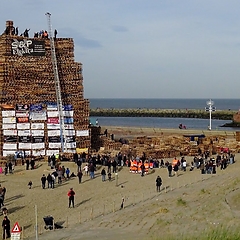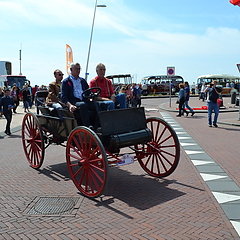The tradition includes placing a decorated facade sign on the roof construction of farms and houses in the Frisian countryside. The Frisian 'ûleboerd' is characterized by the stylized, sawn-out swans flanking the facade sign. The name refers to the original function: through a fly hole in the board, owls can fly freely in and out of the barn and hunt the mice that live there.
The homeowners and residents of farms or houses where a ûleboerd is attached are the practitioners. Several carpenters and thatchers in the province of Frisia still design and manufacture wooden ûleboerds.
The ûleboerd has a long history. The oldest known invoice of a carpenter for an owl board dates from 1669. Originally, owl boards were mainly placed on farms. Because nowadays many farms have become residential homes and many civilian residences have been decorated with ûleboerds, there are currently more of those than around 1900.



